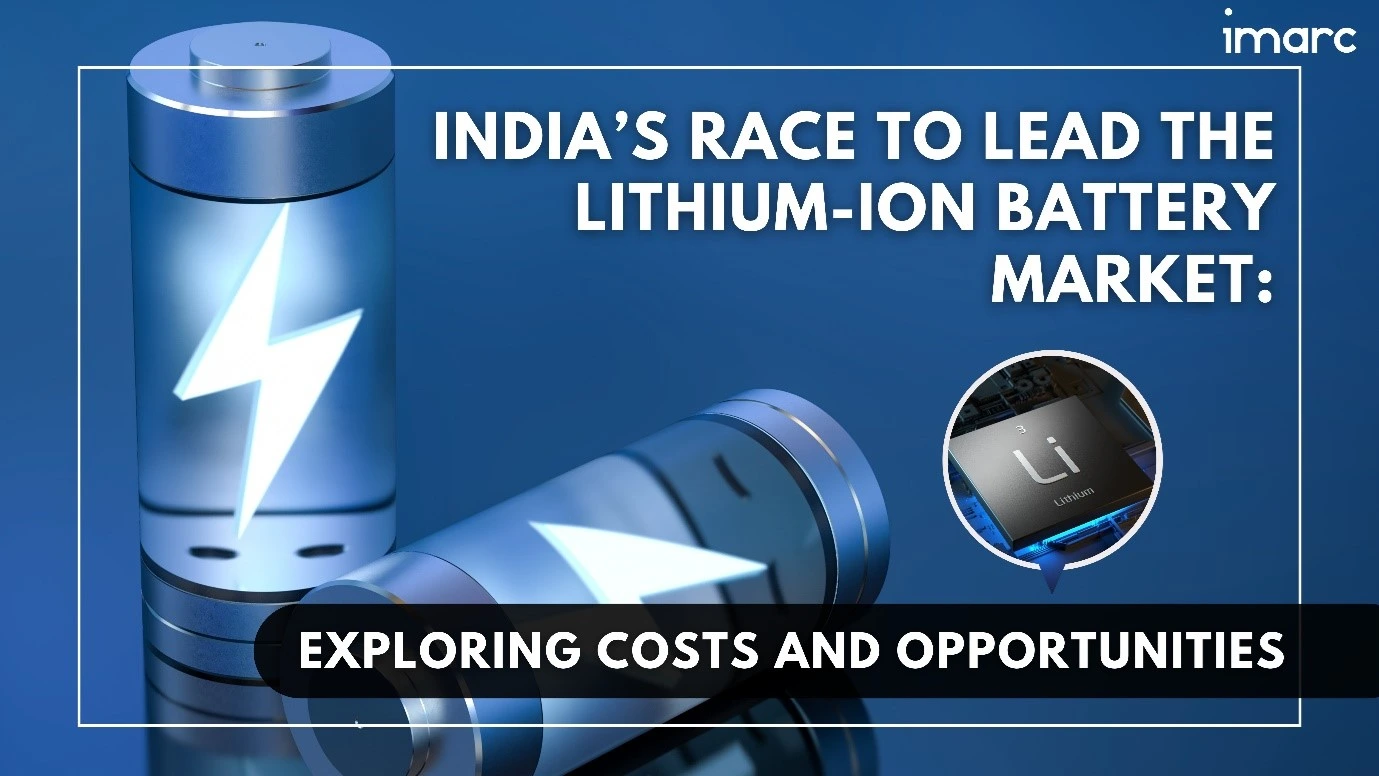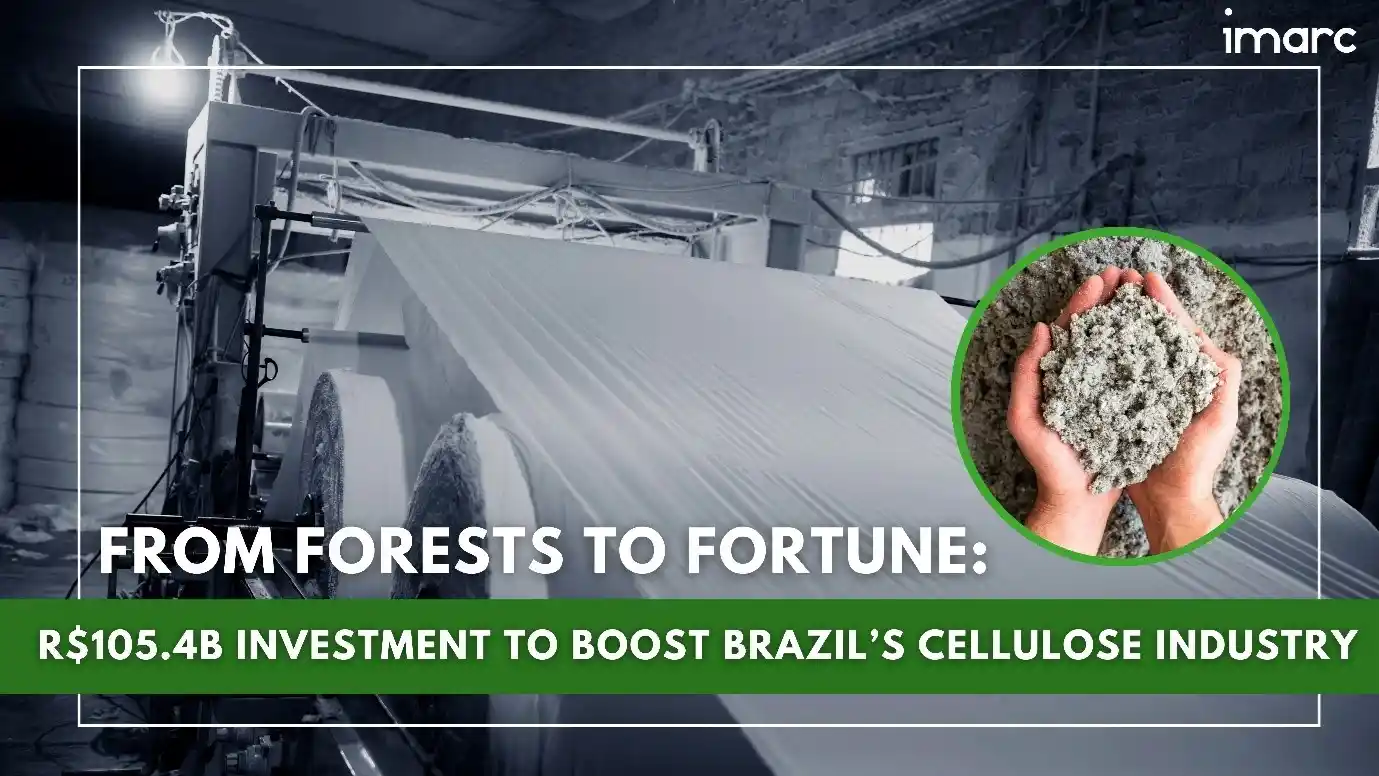Big Plans for Urea: Mexico Targets Tripling Fertilizer Production for 2024
_11zon.webp)
Urea is employed in a wide range of applications, such as nitrogenous fertilizers, stabilizing agents, keratolytic agents, and resins, among others. Key industries that utilize urea include agriculture, chemicals, automotive, and medical sectors. According to recent findings by IMARC Group, the global urea market reached a value of US$ 51.9 Billion in 2023. Looking ahead, the market is projected to grow to US$ 59.9 Billion by 2032, with a compound annual growth rate (CAGR) of 1.6% during 2024-2032. Several factors are driving this growth, including the increasing demand for nitrogen-based fertilizers in India, ongoing advancements in urea production technology, the rising need for higher crop yields to meet growing food demand, and favorable government policies.
Mexico, a major global producer, and exporter of agricultural products, plays a significant role in the world’s agricultural exports. The country’s extensive agricultural activities, coupled with the need to increase crop yields, are fueling demand for urea. Mexican farmers rely on nitrogenous fertilizers like urea to boost the yields of crops such as wheat, canola, and corn. However, Mexico has experienced fertilizer shortages due to adverse weather conditions, supply chain disruptions, and rising energy and transportation costs, which have driven up the prices of ammonia and urea. In 2021, Mexico imported approximately 62% of its fertilizer needs.
In response to these challenges, the federal government announced plans in May 2022 to triple fertilizer production to support local farmers and curb consumer price inflation, with the aim of achieving fertilizer self-sufficiency by 2024. As part of this initiative, the government unveiled a US$ 500 Million investment plan to reactivate national fertilizer production. Ammonia and urea production plants in Veracruz, Michoacán, and Baja California Sur will be revitalized to ensure a steady supply of fertilizer to small-scale farmers. With this investment, the Mexican government expects domestic production to reach 2,500 tons of urea per day. In addition to government efforts, several domestic and international companies have invested in fertilizer production in Mexico, further driving the growth of the urea market in the region, given its critical role as a raw material in fertilizer production.
The Future of Fertilizers: Updates on Mexico's Urea Production Initiative
- In August 2024, Casale entered into a contract with Duro Felguera SA, a subsidiary of Mota-Engil, to deliver licensing and preliminary engineering services for a new fertilizer complex for Pemex in Escolin, Veracruz, Mexico. This facility will include a 1,200 MTD ammonia production plant using Casale's N-ELEVA process and a 2,125 MTD granular urea melting plant that features the advanced Split Flow Loop and Casale Green Granulation technologies.
- In July 2024, Mota-Engil entered into a partnership with PEMEX to construct a fertilizer plant in Veracruz, with an investment of US$1.2 Billion. This initiative aims to enhance agricultural productivity in Mexico while reducing reliance on fertilizer imports. The project also emphasizes environmental benefits through the production of AdBlue. The agreement with PEMEX encompasses the engineering, construction, financing, and operation of a facility for the production of ammonia, urea, and AdBlue in Veracruz.
- In June 2023, the Indian firm Fermachem announced plans to invest US$ 1.5 Billion in an ammonia and urea manufacturing facility in Armería, Colima, aimed at addressing Mexico's fertilizer needs. The plant is designed to produce 3,500 metric tons of ammonia daily, along with 2,860 metric tons of urea. Additionally, it will include a fertilizer granulation plant with a daily capacity of 2,860 metric tons.
- In April 2023, PEMEX announced plans to invest approximately US$ 750 Million to enhance Mexico's fertilizer production facilities, aiming to support small farmers. This investment will be allocated to upgrading two urea plants and four ammonia plants across the country, as well as comprehensively refurbishing the fertilizer plant in Lazaro Cardenas and the phosphate rock mine in Baja California.
- In February 2023, the Dutch company Tarafert announced it would be building a US$ 1.5 Billion fertilizer plant in Lerdo, Durango, which would begin operations in 2026.
Case Study on Financial Model of Urea
Objective: One of our clients reached out to us to conduct a feasibility study for setting up a mid to large-scale urea manufacturing plant. We developed a detailed financial model for the setup and operation of the plant, which is planned to have an annual production capacity of 2,170 tons and will be situated on a 200,000 square meter site in Mexico.
Manufacturing Process: The urea manufacturing process primarily involves the reaction between ammonia and carbon dioxide to produce urea and water. This process occurs through the Bosch-Meiser process, which includes two key steps: the formation of ammonium carbamate and its subsequent dehydration to urea. In the first step, liquid ammonia and gaseous carbon dioxide are reacted under high pressure (140-250 bar) and elevated temperatures (170-210°C) in a reactor, forming ammonium carbamate. The carbamate is then dehydrated to urea in a second reactor. Afterward, the urea solution is concentrated by evaporation and crystallized to form solid urea. The unreacted ammonia and carbon dioxide are recycled to minimize waste and improve process efficiency.
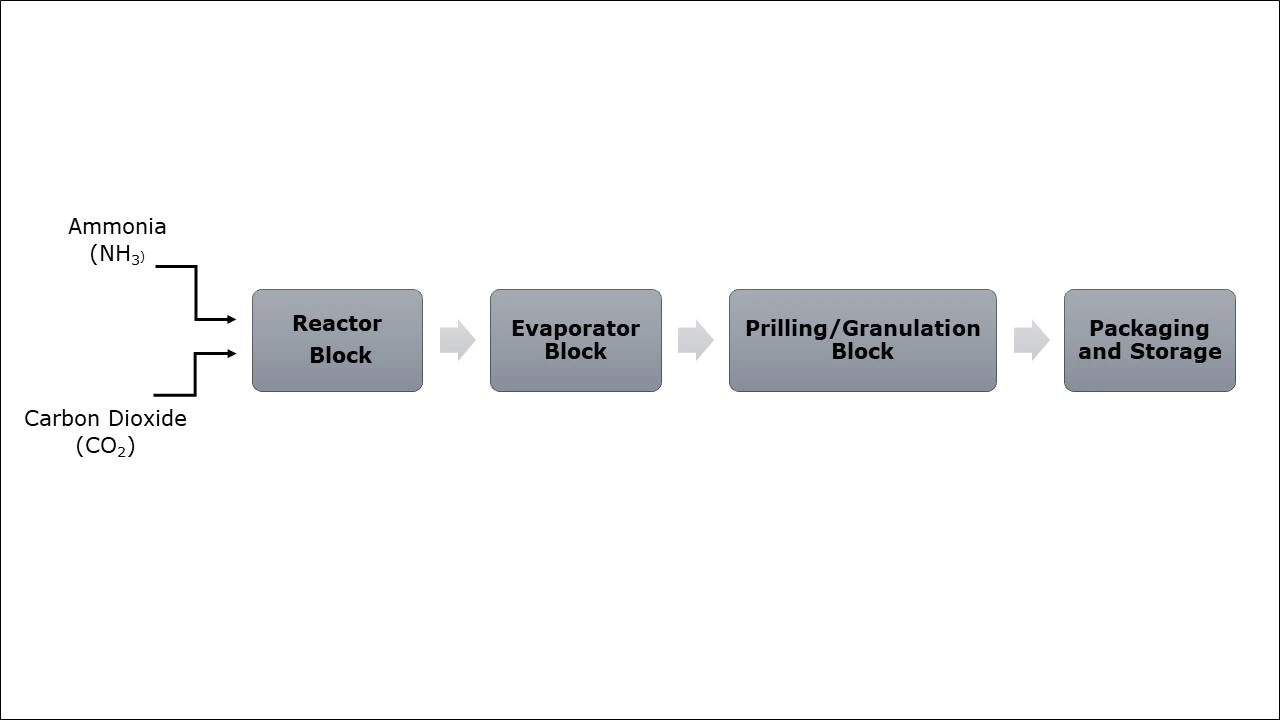
Mass Balance and Raw Material Required: The major raw materials are water, ammonia, and carbon dioxide. For a plant producing around 2,170 tons of urea per year, approximately 283 thousand tons of ammonia, 366 thousand tons of carbon dioxide, and 610 thousand tons of water are required.
Table: Mass Balance: Raw Material Required for Manufacturing 1 Ton of Urea
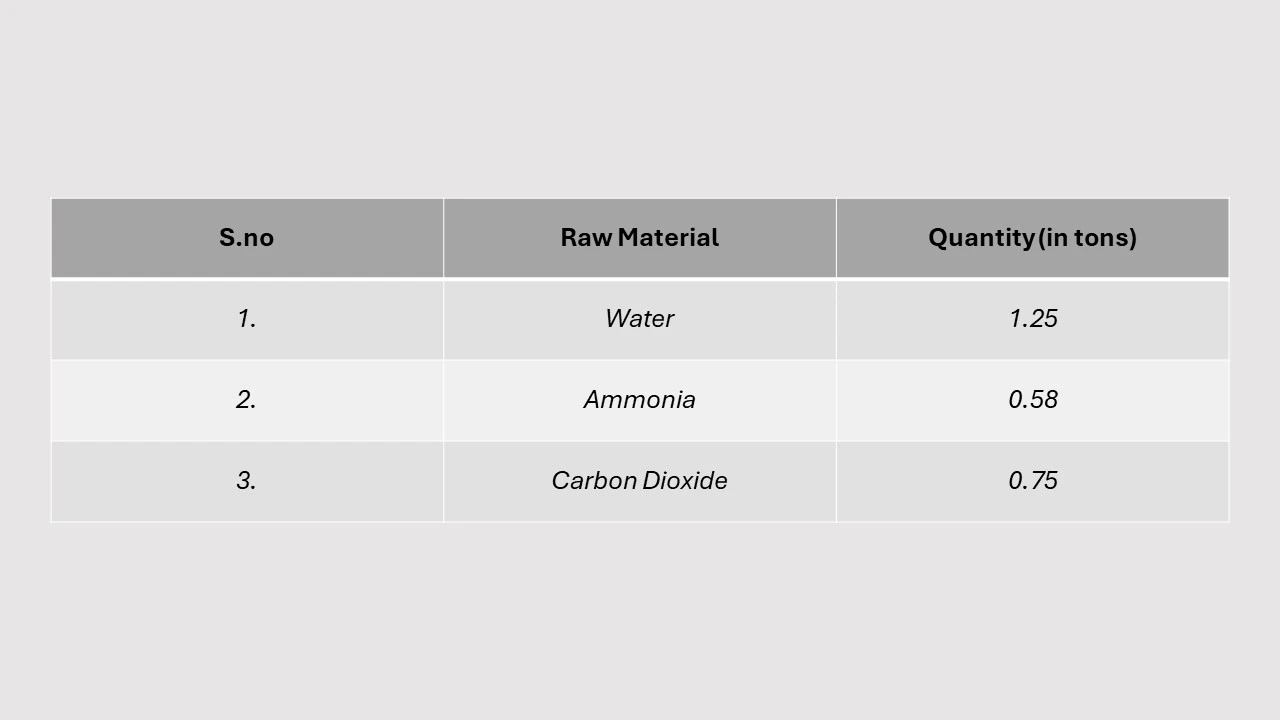
Plant Layout:
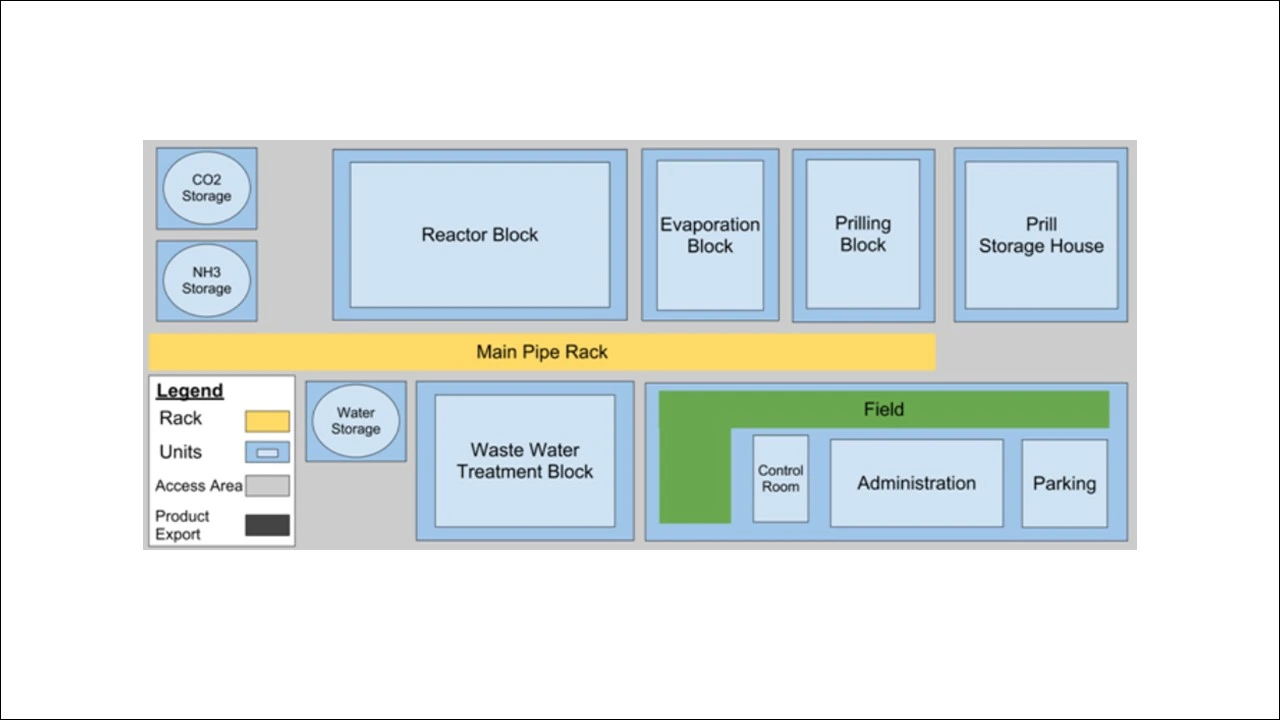
List of Machinery:
The following equipment will be required for the proposed plant:
- Ammonia Reactor
- Ammonia Converter
- Ammonia Condenser
- Ammonia Refrigeration System
- CO2 Compressor
- CO2 Absorber
- CO2 Scrubber
- Urea Reactor
- Urea Condenser
- Urea Stripper
- Urea Granulator
- High-Pressure Steam Generator
- High-Pressure Pumps
- High-Pressure Heat Exchangers
- Decomposer
- Flash Drums
- Evaporators
- Vacuum Pumps
- Condensers
- Granulator
- Drying Drum
- Cooling Drum
- Screening Machine
- Cyclones
- Bag Filters
- Storage Silos
- Bagging Machines
- Boiler
- Cooling Water System
- Instrumentation and Control Systems (PLC/DCS)
- Waste Heat Recovery Systems
- Ammonia Storage Tanks
- Air Compressors
- Nitrogen Generation Plant
- Installation, Piping, Instrumentation and Control - 40% of Equipment Cost
Techno-Commercial Parameter:
- Breakup by Capital Investment: The total capital cost for establishing the proposed plant is approximately US$ 50.2 Million. Machinery costs comprise 44.5% of the total capital costs for the urea production plant. The civil works include site preparation, foundations, structural steelwork, access roads, drainage systems, utility connections, and storage facilities. The land designated for the urea manufacturing plant must comply with the standards set by the relevant authorities.
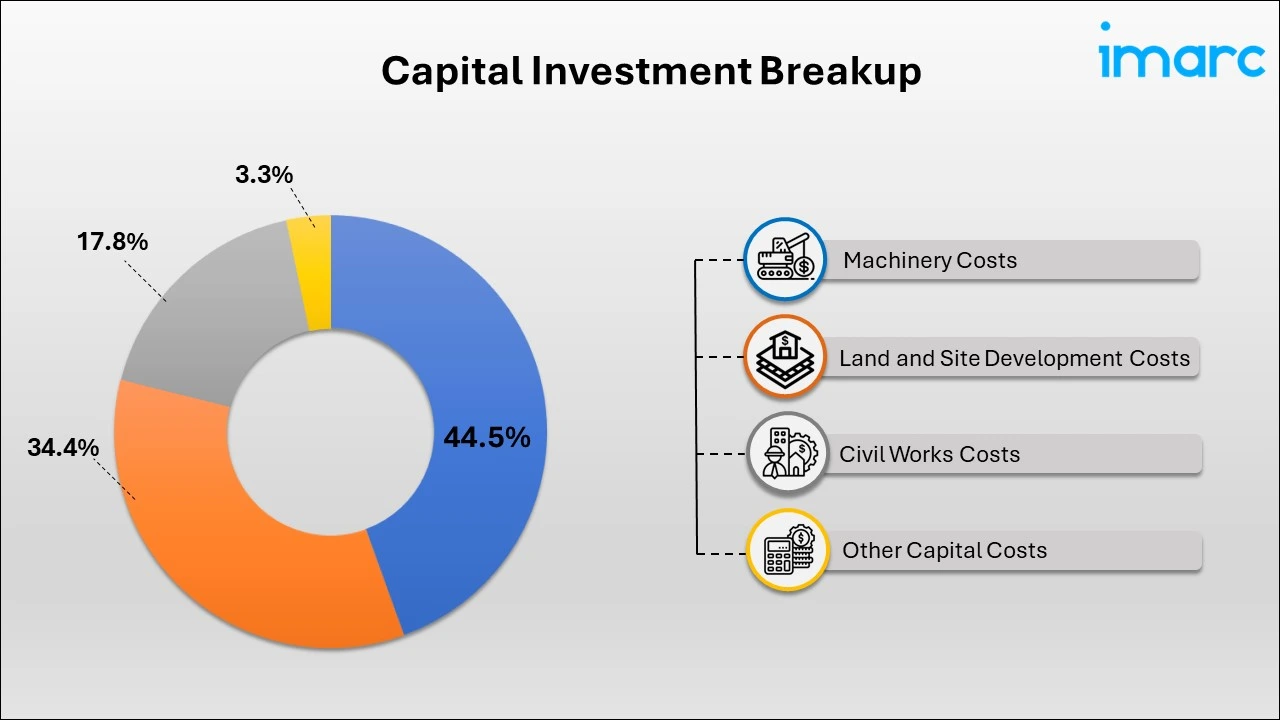
- Breakup by Expenditure: Raw materials account for the largest share of total expenditures, at 73.9%. This is followed by transportation charges, total utility expenditure, salaries and wages, depreciation of plant and machinery, and various other expenses. Other expenses include packaging costs, repair and maintenance, overheads, installments and interest payments, depreciation of civil works, depreciation of miscellaneous fixed assets, and all other costs. Overall expenditures are expected to increase by 26.3% in the fifth year of operation compared to the first year.
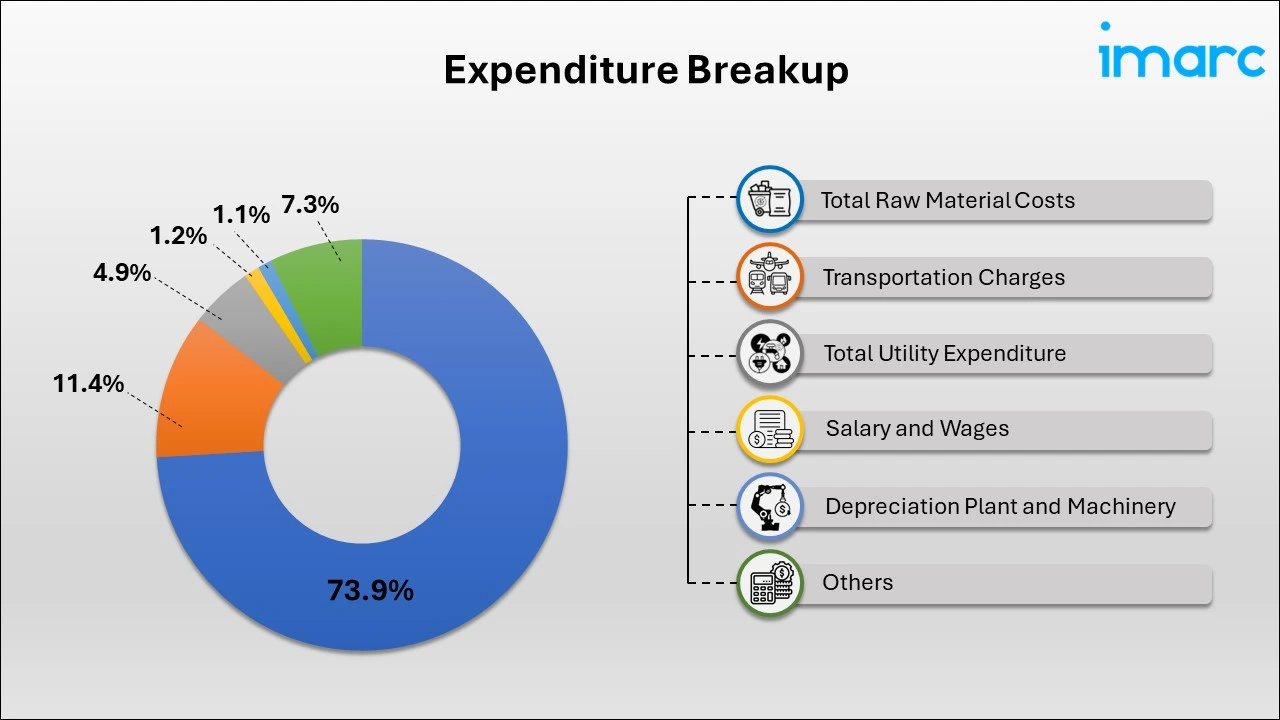
- Profitability Analysis Year on Year Basis
(All values are in US$ Million, except % ages)
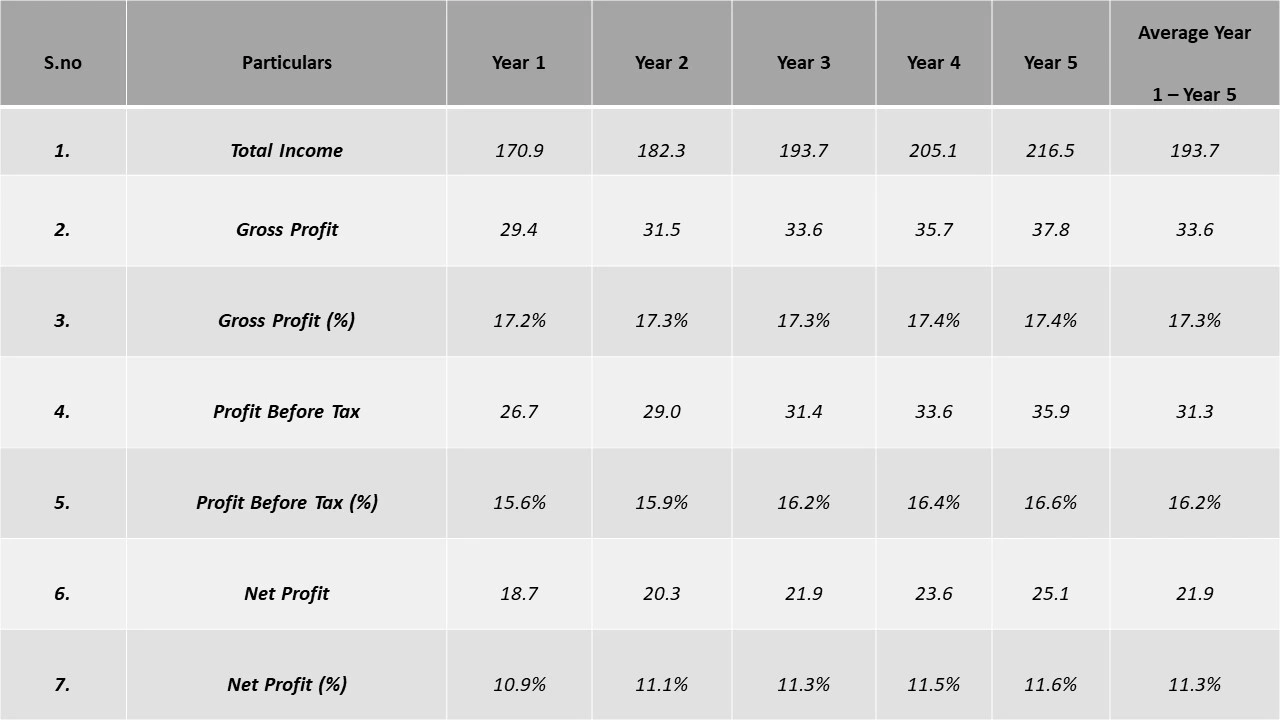
Conclusion
Our financial model for the urea production plant was meticulously developed to meet the client’s objectives, providing an in-depth analysis of production costs, including raw materials, manufacturing, capital expenditure, and operational expenses. By addressing the specific requirements of producing 2,170 tons urea annually, we successfully identified key cost drivers and projected profitability, considering market trends, inflation, and potential fluctuations in raw material prices. This comprehensive financial model equipped the client with valuable insights for strategic decision-making, demonstrating our commitment to delivering high-quality, client-focused solutions that ensure the long-term success of large-scale manufacturing ventures.
IMARC's Financial Model Expertise: Helping Our Clients Explore Industry Economics
IMARC is a global market research company that offers a wide range of services, including market entry and expansion, opportunity assessment, competitive intelligence and benchmarking, procurement research, pricing and cost research, regulatory approvals and licensing, factory setup, factory auditing, company incorporation, incubation services, recruitment services, and marketing and sales.
At IMARC, we leverage our comprehensive market research expertise to support companies in every aspect of their business journey, from market entry and expansion to operational efficiency and innovation. By integrating our factory setup services with our deep knowledge of industry dynamics, we empower our clients to not only establish manufacturing facilities but also strategically position themselves in highly competitive markets. Our financial modeling and end-to-end consultation services ensure that clients can explore the feasibility of their plant setups while also gaining insights into competitors' strategies, technological advancements, and regulatory landscapes. This holistic approach enables our clients to make informed decisions, optimize their operations, and align with sustainable practices, ultimately driving long-term success and growth.
Contact Us
Have a question or need assistance? Please complete the form with your inquiry or reach out by emailing us on sales@imarcgroup.com.
